Cultivation of filamentous fungi in airlift bioreactors: advantages and disadvantages
- PMID: 39928147
- PMCID: PMC11811475
- DOI: 10.1007/s00253-025-13422-4
Cultivation of filamentous fungi in airlift bioreactors: advantages and disadvantages
Abstract
Filamentous fungi or mycelia are a valuable bioresource to produce several biomolecules and enzymes, especially because of their biodegradation potential and for their key role of enablers of a circular bioeconomy. Filamentous fungi can be grown in submerged cultivation to maximise the volumetric productivity of the bioprocess, instead of using the more established and time-consuming solid-state cultivation. Multicellular mycelia are sensitive to shear stresses induced by mechanical agitation, and this aspect greatly affects their morphology in submerged cultivation (pelletisation) and the connected volumetric productivity. An efficient compromise is the growth of filamentous fungi in airlift bioreactors (ALR) where the volumetric oxygen transfer (KLa) is optimal, but the shear stress is reduced. In this review, we critically analysed the advantages and disadvantages of ALR-based cultivation of filamentous fungi, comparing these bioreactors also with stirred tank reactors and bubble column reactors; we focused on scientific literature that highlights findings for the cultivation of filamentous fungi for both the production of enzymes and the production of myco-biomass in ALR; we included studies for the control of the pelletisation of the fungal biomass in batch and semi-continuous cultivation, highlighting the interlinked hydrodynamics; finally, we included studies regarding the modifications of ALR in order to enhance filamentous fungi production. KEY POINTS: • ALR are efficient for batch and prolonged continuous cultivation of filamentous fungi. • ALR show both optimal gas hold-up and KLa with an airflow that has high superficial velocity and critical bubble diameter (1-6 mm). • Suspended mycelia aggregates (pellet) maintain a fluidised motion in ALR if their size/density can be controlled.
Keywords: Airlift fermentation; Filamentous fungi; Fluid dynamics; Volumetric productivity.
© 2025. The Author(s).
Conflict of interest statement
Declarations. Ethical approval: This article does not contain any studies with human participants or animals performed by any of the authors. Conflict of interest: The authors declare no competing interests.
Figures
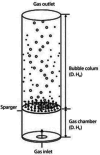
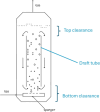


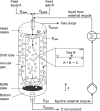


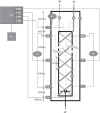
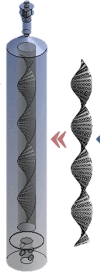
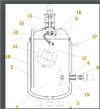


References
-
- Ahamed A, Vermette P (2010) Effect of mechanical agitation on the production of cellulases by Trichoderma reesei RUT-C30 in a draft-tube airlift bioreactor. Biochem Eng J 49(3):379–387
-
- Ansari AA, Abouhend A, Park C (2019) Effects of seeding density on photogranulation and the start-up of the oxygenic photogranule process for aeration-free wastewater treatment. Alg Res 40:101495
-
- Asadollahzadeh M, Ghasemian A, Saraeian A, Resalati H, Taherzadeh MJ (2018) Production of fungal biomass protein by filamentous fungi cultivation on liquid waste streams from pulping process. BioResources 13(3):5013–5031
Publication types
MeSH terms
Substances
LinkOut - more resources
Full Text Sources
Medical
Miscellaneous

